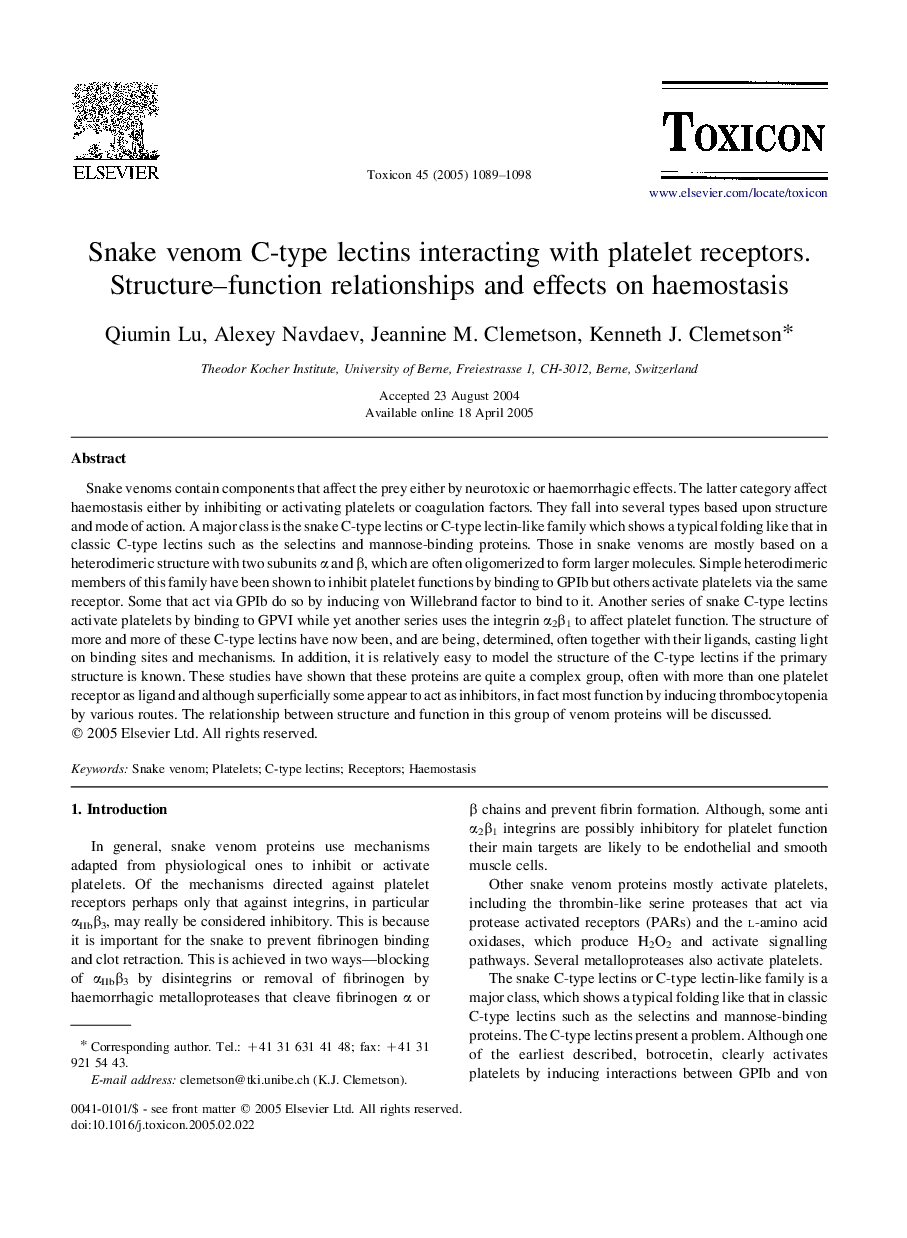| Article ID | Journal | Published Year | Pages | File Type |
|---|---|---|---|---|
| 10881642 | Toxicon | 2005 | 10 Pages |
Abstract
Snake venoms contain components that affect the prey either by neurotoxic or haemorrhagic effects. The latter category affect haemostasis either by inhibiting or activating platelets or coagulation factors. They fall into several types based upon structure and mode of action. A major class is the snake C-type lectins or C-type lectin-like family which shows a typical folding like that in classic C-type lectins such as the selectins and mannose-binding proteins. Those in snake venoms are mostly based on a heterodimeric structure with two subunits α and β, which are often oligomerized to form larger molecules. Simple heterodimeric members of this family have been shown to inhibit platelet functions by binding to GPIb but others activate platelets via the same receptor. Some that act via GPIb do so by inducing von Willebrand factor to bind to it. Another series of snake C-type lectins activate platelets by binding to GPVI while yet another series uses the integrin α2β1 to affect platelet function. The structure of more and more of these C-type lectins have now been, and are being, determined, often together with their ligands, casting light on binding sites and mechanisms. In addition, it is relatively easy to model the structure of the C-type lectins if the primary structure is known. These studies have shown that these proteins are quite a complex group, often with more than one platelet receptor as ligand and although superficially some appear to act as inhibitors, in fact most function by inducing thrombocytopenia by various routes. The relationship between structure and function in this group of venom proteins will be discussed.
Related Topics
Life Sciences
Biochemistry, Genetics and Molecular Biology
Biochemistry, Genetics and Molecular Biology (General)
Authors
Qiumin Lu, Alexey Navdaev, Jeannine M. Clemetson, Kenneth J. Clemetson,
